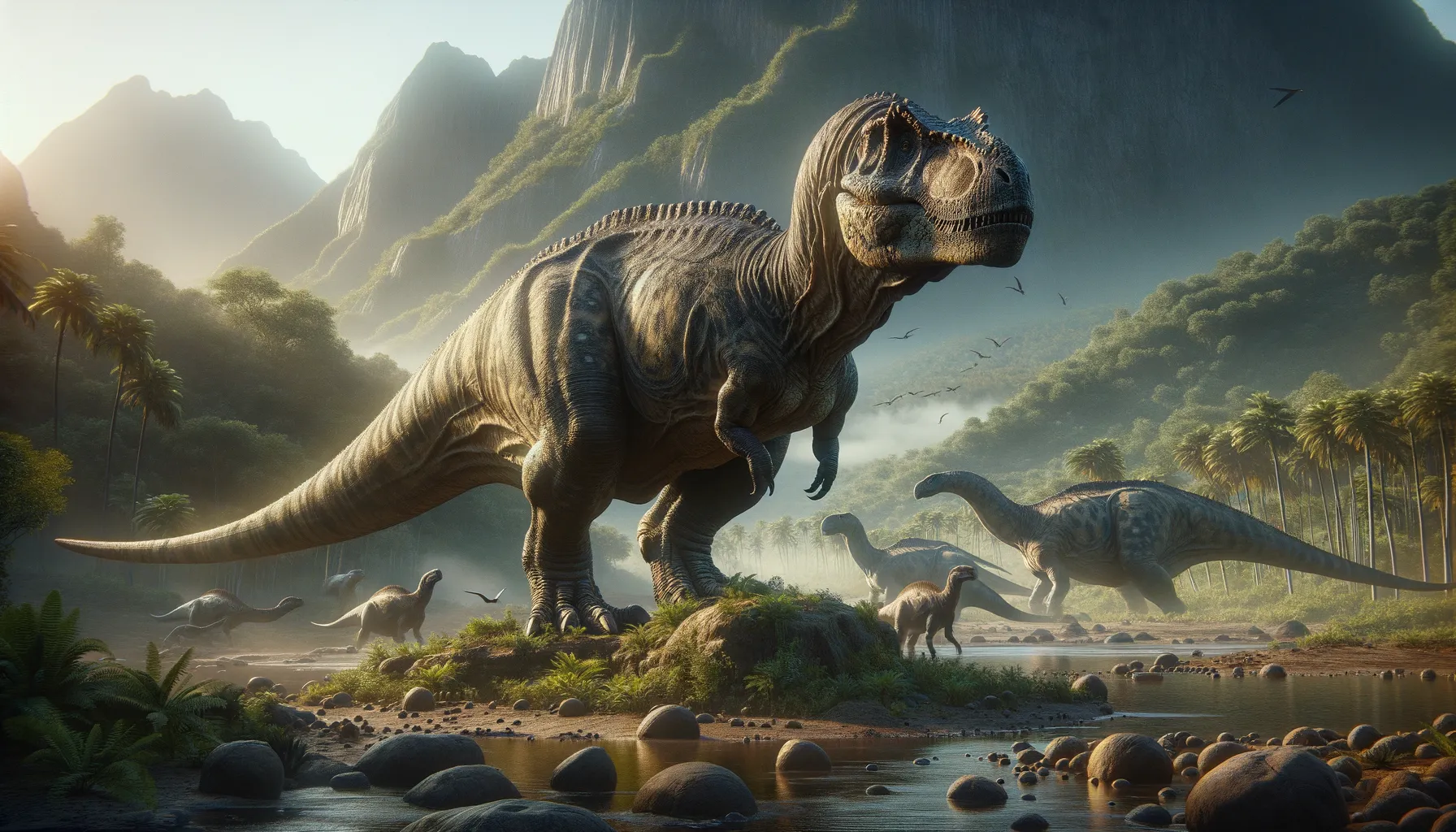
Ugrosaurus
Ancient giant of resilient might.
Period
Cretaceous
Length
Roughly 8 meters in length.
Height
Around 3 meters tall.
Weight
Approximately 4 tonnes.
Ugrosaurus was a large herbivorous dinosaur that roamed the Earth during the Cretaceous period. Known for its bulky body and relatively slow movement, this dinosaur fed primarily on vegetation. Fossils have been found in North America, giving insights into its life and environment. With a course but thick skin and protective structures, it was well adapted to its surroundings and the threats posed by predators of its time.
Diet
The Ugrosaurus was herbivorous, feeding mainly on low-lying plants and foliage. Its diet consisted of ferns, cycads, and conifers, which were abundant during its time.
Hunting
Although not a hunter by nature, it used its size as a deterrence against predators. Their primary defense mechanism was congregating in groups to deter carnivorous threats.
Environmental challenges
The Ugrosaurus faced challenges such as changing climates that affected plant availability. Natural predators were another challenge, though their size often served as an effective defense. Competition for resources with other large herbivores required adaptive feeding habits.
Speed
Slow-moving, estimated at 5 km/h.
Lifespan
Estimated to live up to 70 years.
First discovery
Discovered in the late 19th century in Montana, USA.
Fun Facts
- Ugrosaurus is known from very limited fossil remains, adding an air of mystery to its existence.
- This dinosaur lived during the Late Cretaceous period, around 70 million years ago.
- Ugrosaurus is believed to have been a herbivore, feeding on plants in its environment.
- The name 'Ugrosaurus' means 'Ugo's lizard,' named after a researcher or perhaps the location where it was found.
- Fossils of Ugrosaurus have been discovered in what is now the United States, particularly in Montana.
- Despite its scarcity in fossil records, Ugrosaurus is an important piece of the puzzle in understanding dinosaur biodiversity in the Late Cretaceous.
- It was a member of the ceratopsid family, known for their impressive horns and frills.
Growth and Development
Ugrosaurus hatchlings were protected by their group until they grew larger. Growth rates were steady, with significant weight gain in the first few years. Fossils suggest their bones had a growth pattern that indicated a long-lived species.
Habitat
It thrived in forested areas with abundant plant life for food. The habitat was generally temperate with plenty of water sources. The landscape was a mix of open areas and wooded regions, providing both protection and food.
Interaction with other species
Largely peaceful, the Ugrosaurus often shared its environment with other herbivores. Occasionally, they had to fend off predators like theropods using their group strength. They also coexisted with smaller creatures, creating a balanced ecosystem.
Natural lifespan
Their expected lifespan could reach up to 70 years in the wild.
Reproduction
Reproduction involved laying a clutch of eggs in carefully chosen nests. Juveniles depended on herd protection as they developed. The nesting sites were strategically located to allow access to food and water.
Social behaviour
This species was social, often traveling in herds that provided mutual protection. They employed vocalizations and physical signals to communicate among group members. Hierarchies in the herd were maintained for efficient resource sharing.
Fossil locations
Fossils have been found predominantly in Montana, allowing paleontologists to piece together much of its life history. Additional bones were discovered in the surrounding areas, which bolstered the understanding of its geographic range. These sites remain critical for ongoing paleontological studies.
